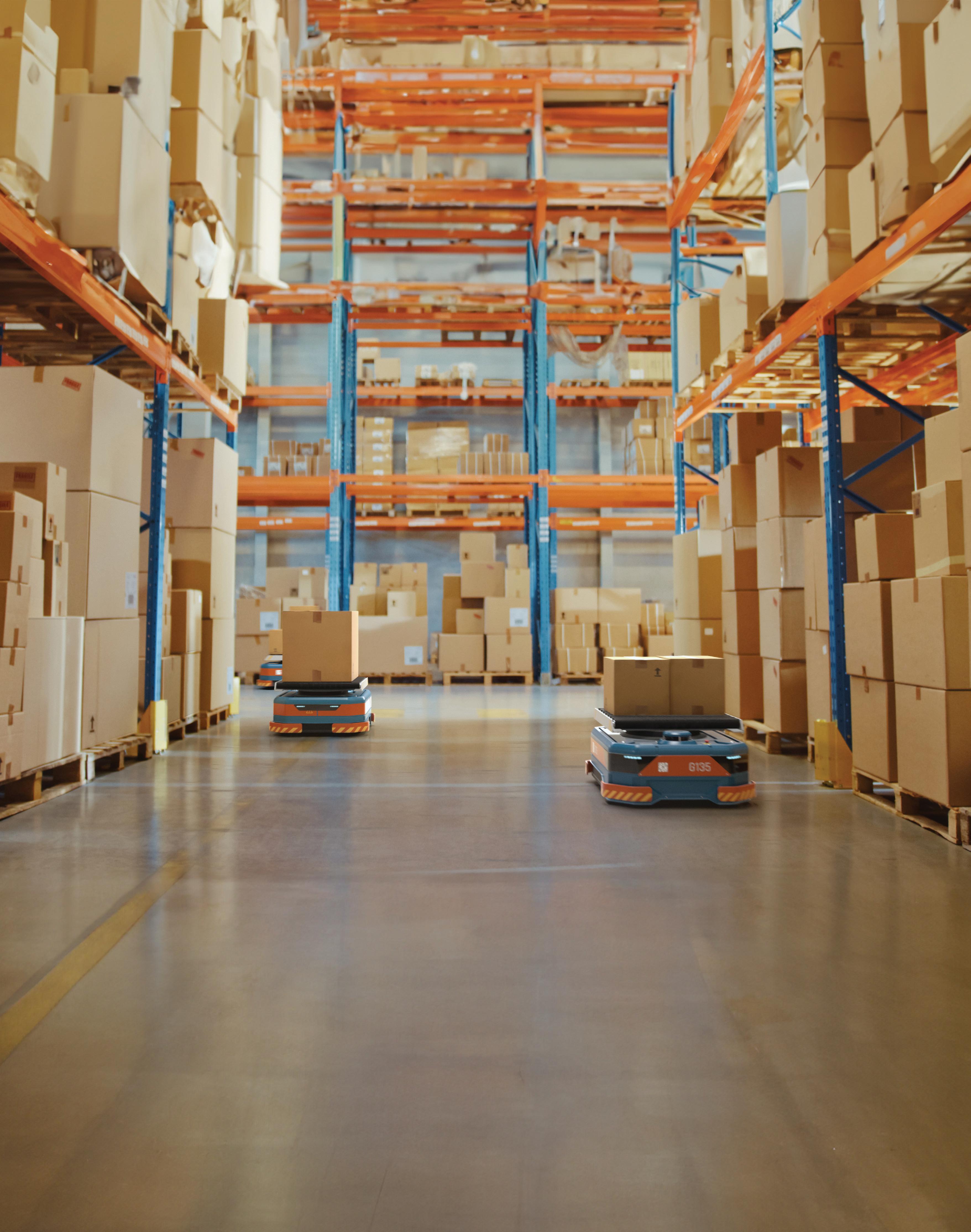
A Supplement to Design World theautomatedwarehouse.com MARCH 2024 Bins in eight seconds: a warehouse transformation story .................................................... 42 Seeing the future of AMR vision systems ......................................................................................48 How mobile robots supercharge warehouse operations ....................................................... 52 AMR Inside: vision systems Seeing the future of
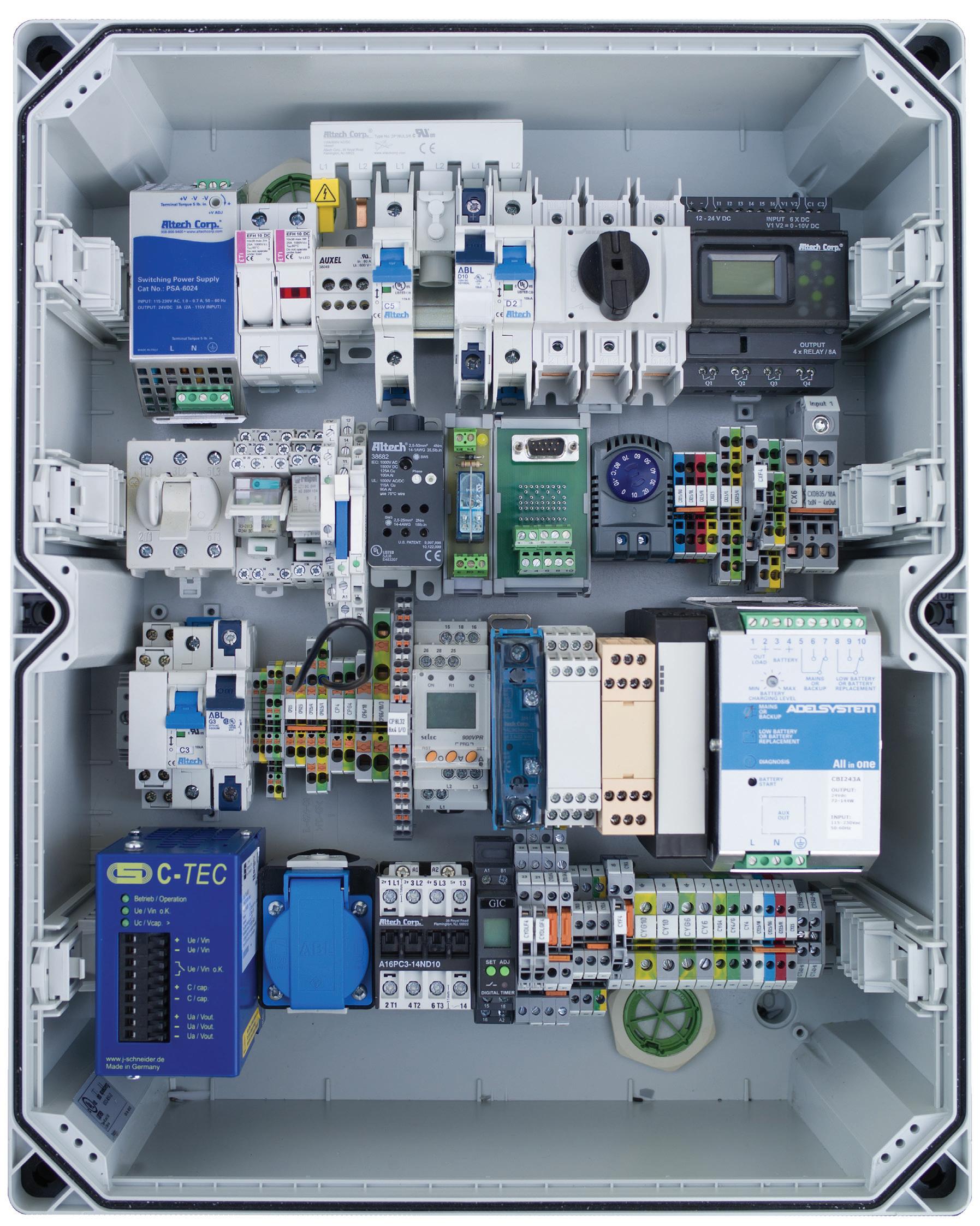
AUTOMATED WAREHOUSE


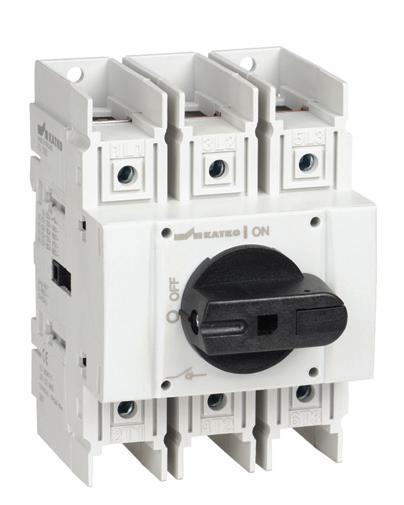





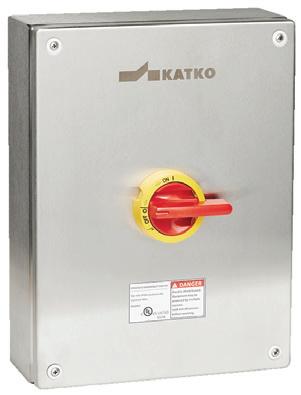

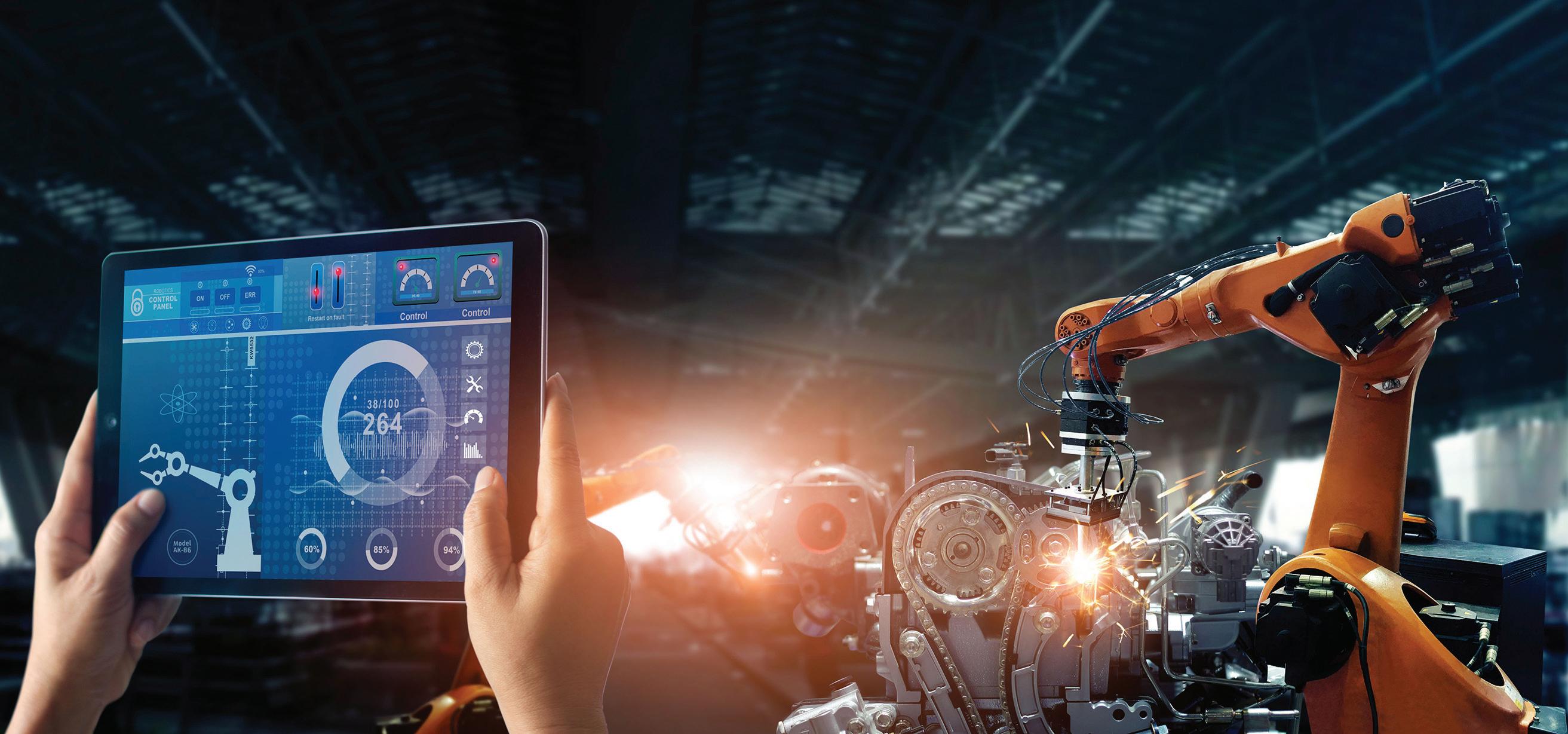
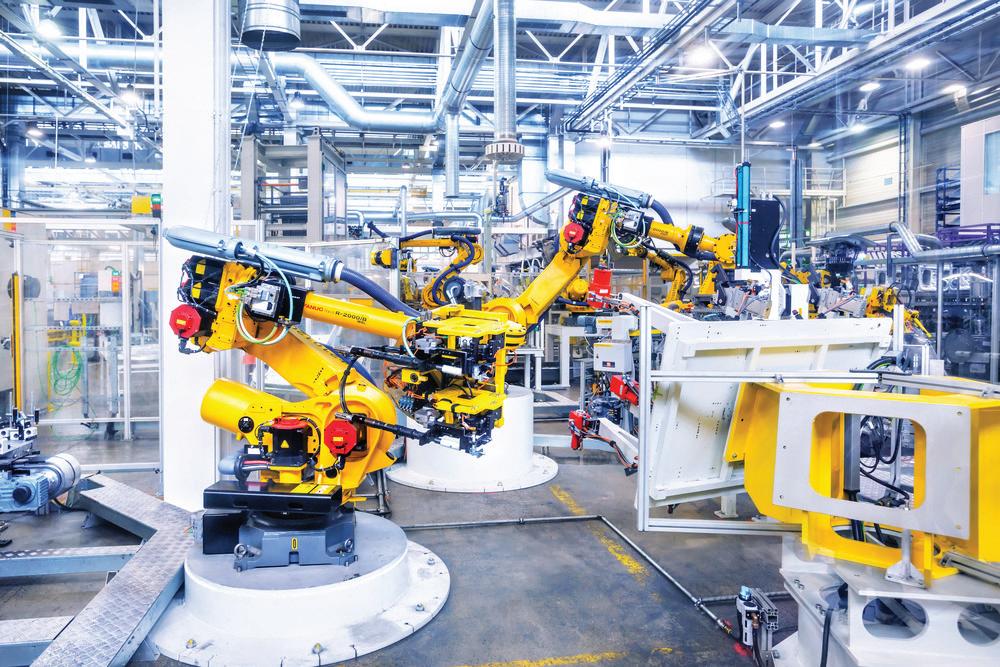





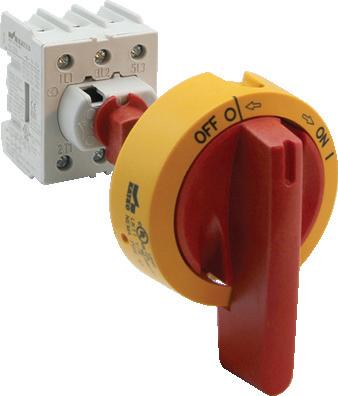
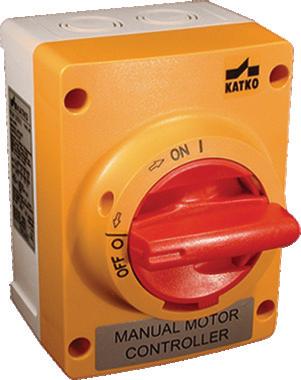



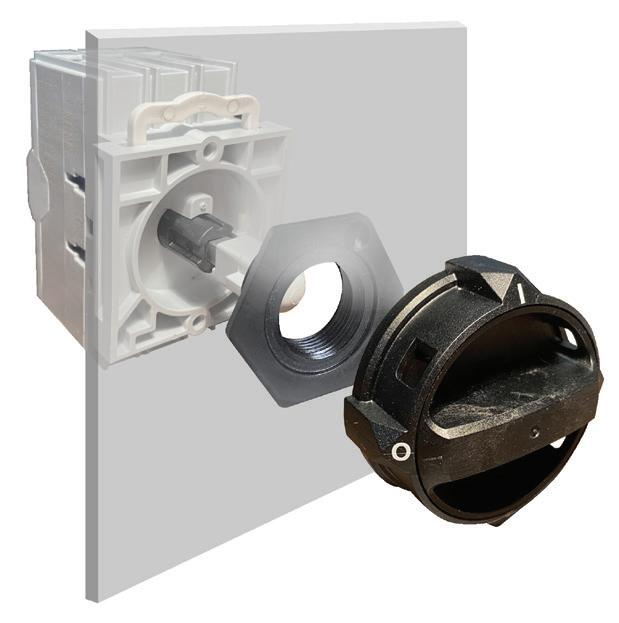








AUTOMATED WAREHOUSE
to ensure we stayed on track. So, they returned to remediate the floor some more, and it worked. We did all our receiving, got our pallets received, and then had to clear the floor again.
DW: Were there any other surprises or unplanned tasks?
Schulte: The AutoStore was built while we worked with other vendors. We had to get electrical to support what was going into the AutoStore. We had to get data run for the pick ports because each pick port needed its own data.
We had a huge ceiling fan right above the AutoStore, so we had to move it because we didn’t want it to hit anyone on the grid. We also had skylights above the AutoStore and hired roofers to cover them to avoid the risk of leaking.
Then, we found out about our fire suppression requirements. We needed
a fire pump, which was pretty expensive and something we didn’t expect. We also had to get a VESDA alarm system for very early smoke detection. If there's any smoke in the air, it triggers an alarm, the robots huddle together, and the AutoStore stops. We spent a lot of time and effort making sure that got done in our timeframe. We started talking to the fire suppression people in January 2023, and it was the last thing completed in the project. The final pump inspection occurred the week we went live, so it took the full 10 months to get the fire suppression done.
But we had a great group of contractors help us get ready. The electricians pretty much lived here for three months. We had a construction company build the pump room, and they were always here, as were the fire suppression people. So, we grew
great friendships and spent a lot of time together, supporting them and giving them what they needed to ensure the work got done well and on time. Having those people to work with is essential to ensure success.
The Kardex team started building about the week after the Fourth of July and was done toward the end of August. The grid was built quickly, and the people were here every day. The whole process and everything we’ve done with Kardex has been a great experience.
DW: How was the experience for anyseals employees?
Schulte: There was a lot of skepticism from employees while the machine was being built. They’d say, “There's no way this machine will be faster than us. We're so fast. We're going to be better than the machine.” Now that it’s installed, they're

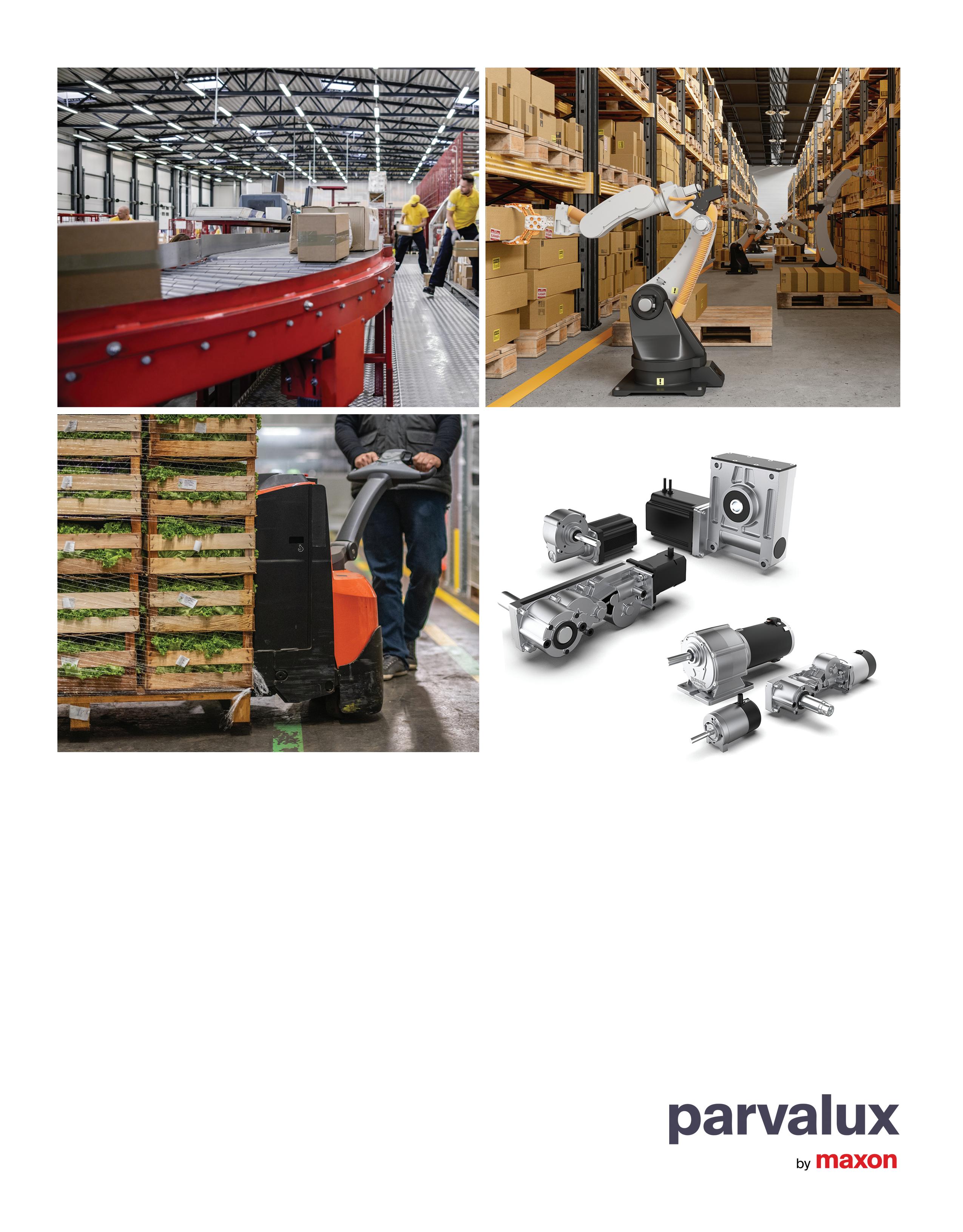

AUTOMATED WAREHOUSE
trying to get as much stuff into it as possible because it makes picking much easier and faster. So, it's the flip-flop of people fighting it initially and then loving it at the end.
Overall, though, it was exciting for them. It was also quite tiresome, but we made it through. It’s important to have a great group of people to work with and engage your employees so they understand what's happening and that they're a big part of it. There was a lot of change and work to get through, but everybody's excited about it now.
DW: What are some other tips or lessons learned?
Schulte: Project costs are obviously a big factor, and with projects of this size, you usually have a lot of change requests. We went slightly over budget with only three change requests. For example, in the middle of the project, we decided to add an extra pick port before everything shipped from outside the country because it would be cheaper than ordering it later. There are also seismic towers that hold the grid in place. We planned on having six but needed eight to make the structure safe and sturdy. So, there was another slight change, but nothing shocking.
During the first two weeks of September, Kardex inducted all the bins.
Warehouse employees place parts on the scale, the scale interacts with the WMS, and employees fulfill the correct quantity. Leftover parts go back in the bin and then to storage. | anyseals
Our AutoStore has 20,000 bins, so we had truckloads coming in, which took about seven days. We can handle 5,000 more bins, so our AutoStore can hold 25,000 bins in total.
We went live in early October, two weeks ahead of schedule. The WMS went live first, then the AutoStore. From then, we started filling the bins, which can be challenging. It’s important to schedule the time and appropriate people to do the inbound and get inventory into the AutoStore. It’s hard to completely test until you have a good amount of inventory in the AutoStore. So, in the beginning, set up time to get as much inventory in there as possible. And if people are doing outbound, make sure you have people that can do inbound, too.
DW: How’s the system running now?
Schulte: We have 100% uptime. The WMS interaction with the system had a few little glitches, so good, strong communication between the interfaces is important. The WMS must speak to the AutoStore to ensure you successfully integrate the two.
Now, we're starting to put more inventory in and can look at our daily picks from the overstock and AutoStore areas. With the AutoStore, the average time for a bin to come to us is eight
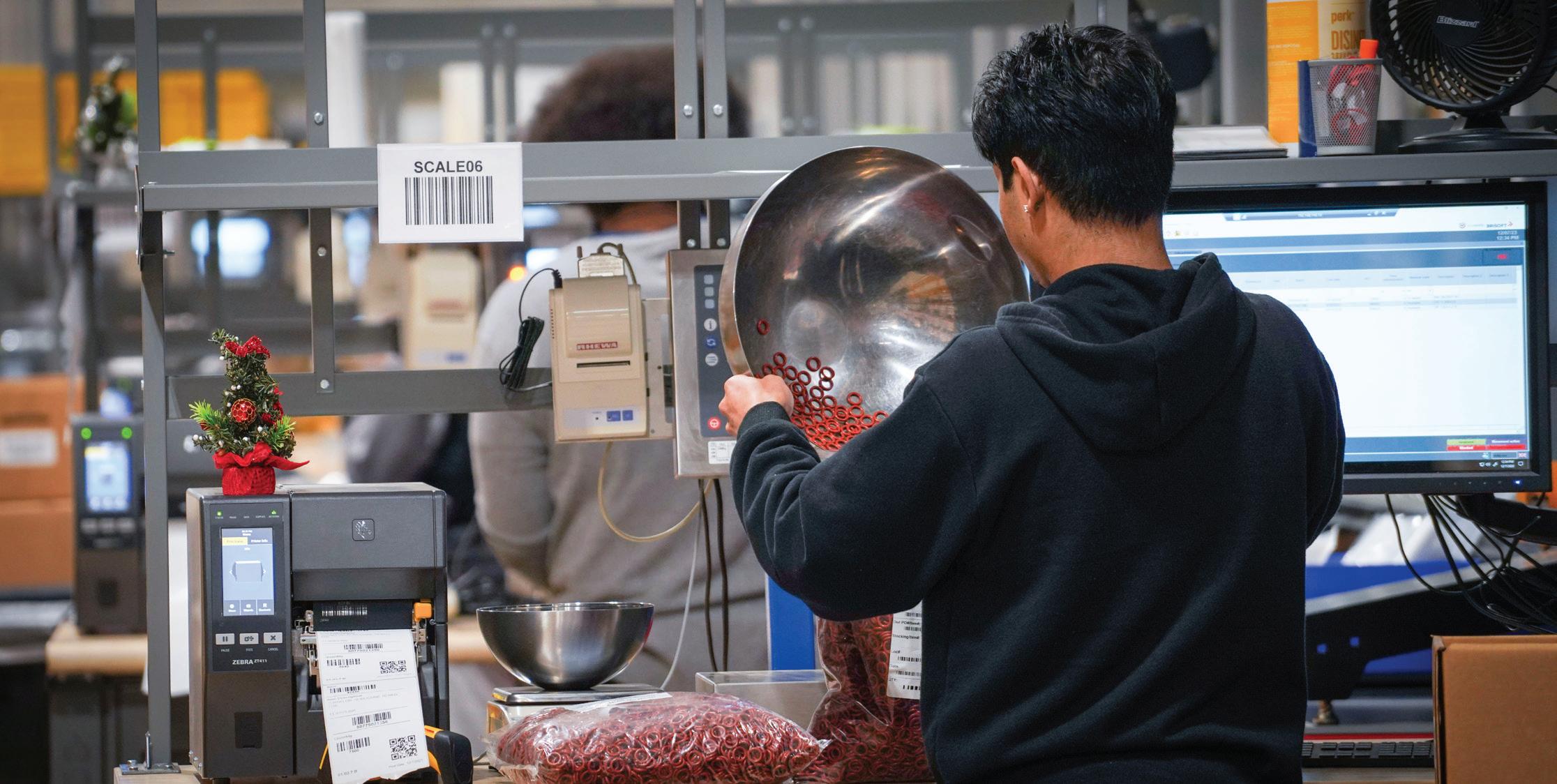
seconds. Nobody could go through the warehouse and pick something in eight seconds.
Our business is unique because we don’t just grab products from the bin, and then the bin goes away. We grab a bag from the bin, place the parts on the scale, and weigh it to ensure we have the correct quantity. The scale and WMS are integrated, so the WMS knows the weight of each item and how many are needed to ensure the correct amount for each customer. So, the bin comes down, we take a bag from the bin, put the parts on the scale, then put the leftovers back into the bin, and the bin goes away.
Previously, our manual picks could take up to 15 minutes per pick because we had to get a lift truck to pull down the pallet, find the box on the pallet, and bring the bag to the scale counters. That could take five to 15 minutes, depending on the inventory's location. Once we weigh and count the customer’s parts requested, we label and send it to the shipping department. In the past, the parts we put back into the bin had to be returned to wherever we got it from. Now, we just leave the parts in the bin, and the bin goes away. So, we’re saving tons of time on the put-away as well.
One of the big things I learned is that the WMS is the brain, and the robots do whatever the WMS tells them to do. For example, when we have rush orders, we can’t wait to get through 200 picks before getting the rush order out. So, we learned how to prioritize within the WMS to ensure orders are shipped on time. Another recent challenge, as we’ve been putting inventory in the AutoStore, is when we call a bin down, we have another bin going out with that same inventory. So, who wins? Does it go inbound or outbound? It should always be outbound to ensure it gets to the customer, but we’ve been working through those learning factors. It’s been a challenge, but it’s been interesting to learn. AW
anyseals • anyseals.com
www.designworldonline.com 46 DESIGN WORLD March 2024
ACCELERATING WAREHOUSE AUTOMATION
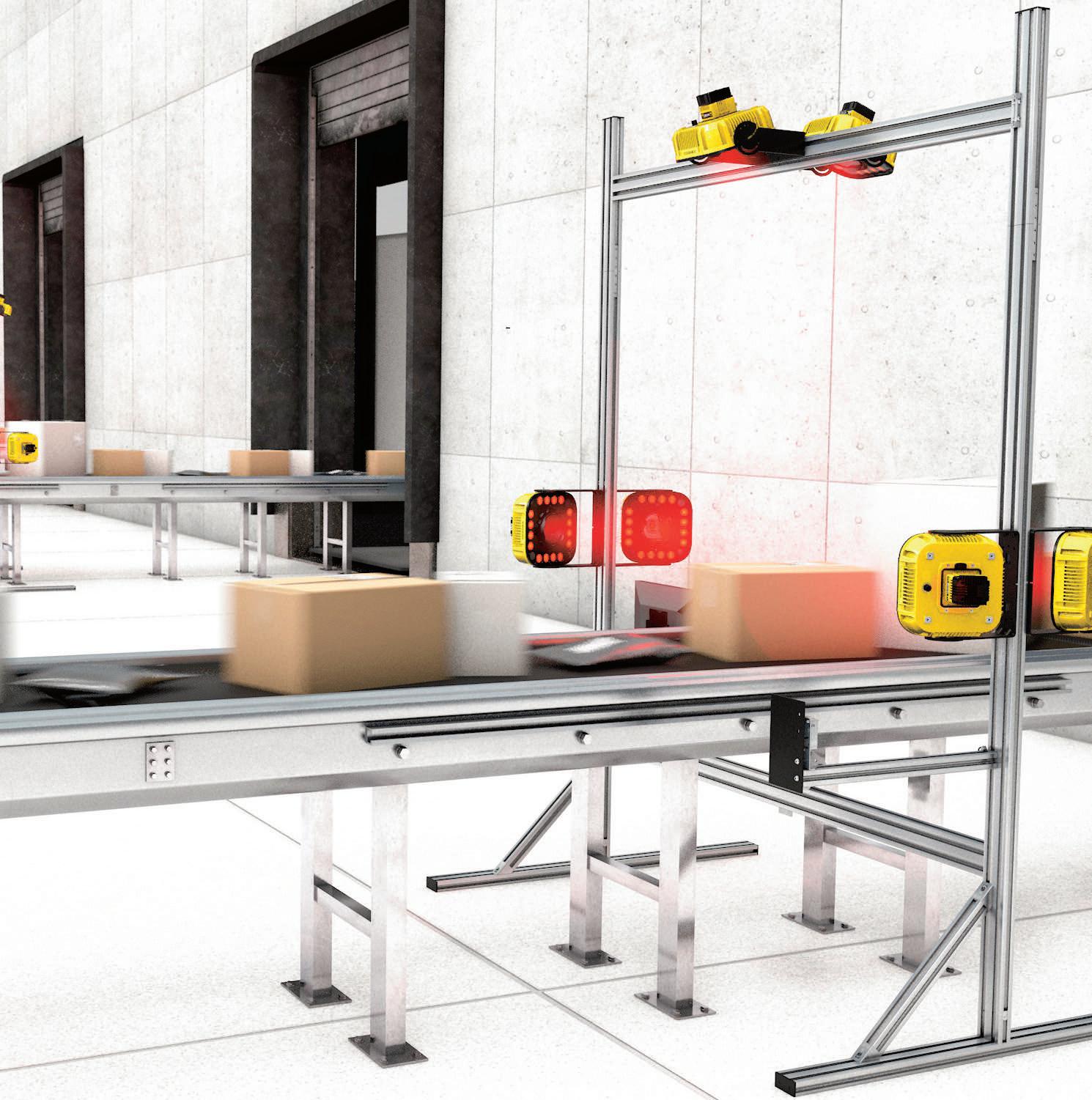
Powerful, multi-purpose solutions with easy installation and maintenance
High-speed, multi-code, multi-symbology barcode reading
Modular, standard structure gets you up and running faster
Advanced, real-time data and analytics
See logistics solutions in action Scan the QR code or visit cognex.com/RobotReport-Nov
Seeing the future of
Mobile robot technology is moving fast, and generative AI is pegged to transform machine vision to enable more integrated solutions.
Vision systems are the bread and butter of AMRs and keep improving as technology evolves.
BY:
RACHAEL PASINI SENIOR EDITOR


Advanced machine learning and visual processing are major trends in automated mobile robot (AMR) development. According to Gartner’s Emerging Tech Impact Radar, advanced computer vision and AI acceleration will be among the most important influencers within the next two years.
“In the past decade, machine vision changed a lot due to technological improvements. In the beginning stage, machine vision was rule-based, which is still very efficient. But about five years ago, deep learning highly improved accuracy and performance. Now, generative AI is changing machine vision again,” said Magic Pao, AVP of Industrial Cloud and Video Group at Advantech, during a keynote panel at the 2023
Advantech Industrial IoT World Partner Conference in Taipei, Taiwan.
Vision is critical for AMRs to navigate complex environments, avoid obstacles (including human workers), and identify and handle items correctly. AMR vision systems typically consist of:
• Cameras that capture image and video footage of the robot’s surroundings
• Other sensors, such as LiDAR and 3D sensors, that help the robot understand its surroundings, develop depth perception, and detect objects
• An onboard processor to analyze visual and sensor data. This processor runs computer vision algorithms to make sense of the
data, identify objects, detect anomalies, and determine the robot’s position and orientation. It may also run simultaneous localization and mapping (SLAM) algorithms to create maps and localize the robot within the maps.
• A communication interface to send and receive data to other robots or systems, such as a central control system
AMR vision systems must be highspeed and low-latency to be effective and ensure safe operation around humans. They also require technology to transmit and process large amounts of data over various distances. Therefore, Gigabit Multimedia Serial Link (GMSL)
www.designworldonline.com 48 DESIGN WORLD March 2024
AUTOMATED WAREHOUSE
In the past decade, machine vision changed a lot due to technological improvements... Now, generative AI is changing machine vision again
technology is often preferred because it can facilitate high-speed data transmission from cameras to the onboard processor and external devices and systems. It also allows data integration from multiple sensors and sources, enabling more complex, real-time decision-making. The latest generation, GMSL3, supports up to 12 Gbps and can transmit data up to 15 m from its host processor.
“We chose GMSL as our technology to empower our computing unit with visual capabilities,” said Jacky Liu, advanced computer vision head of Industrial Cloud and Video Group at Advantech. “It’s not a new technology and has already been widely used in the automotive industry with features such as high data rates and long-distance transmission. Its robustness and data integrity ensure reliable operation in challenging environments, and the scalability and synchronization allow you to run multiple data streams. With GMSL, our current video capture card can support up to eight channels, even 3D cameras, simultaneously.”
In early 2023, Advantech partnered with e-con Systems, an OEM camera solution provider, on a GMSL camera and AI computing system for automated guided vehicle (AGV) and AMR applications. The MIC733-AO is an industrial AI inference system based on NVIDIA Jetson AGX Orin. It has high AI performance of
up to 275 TOPs, a wide range of I/O interfaces for 5G/4G connectivity, and multiple video inputs, including two GMSL. The GMSL camera from e-con Systems transmits video data over long distances, and the solution can integrate multiple cameras into a single Jetson system.
“Today, the whole value chain is compressed, and each role is trying to integrate more things,” said Pao. “We integrate video acquisition software, called the Advantech CamNavi SDK, with NVIDIA ISAAC SDK and ROS2 (Robotic OS) into one software package. We don’t just pre-install them — we also pre-build and pre-train them. To adapt it for robotics, AMRs, and cobots, we just put application software on top and enable the solution.”
During the keynote panel at the World Partner Conference, Pao reiterated that generative AI is changing machine vision and that NVIDIA’s generative AI SDK is ready on the MIC-733-AO. With generative AI, vision systems can improve data augmentation, search functionalities, and image reconstruction. For example, a company may not have enough images to train an AMR to accurately detect item defects or damage. However, with generative AI, the system needs just a few images as examples and can generate numerous defect images with different aspects to retrain the AMR.

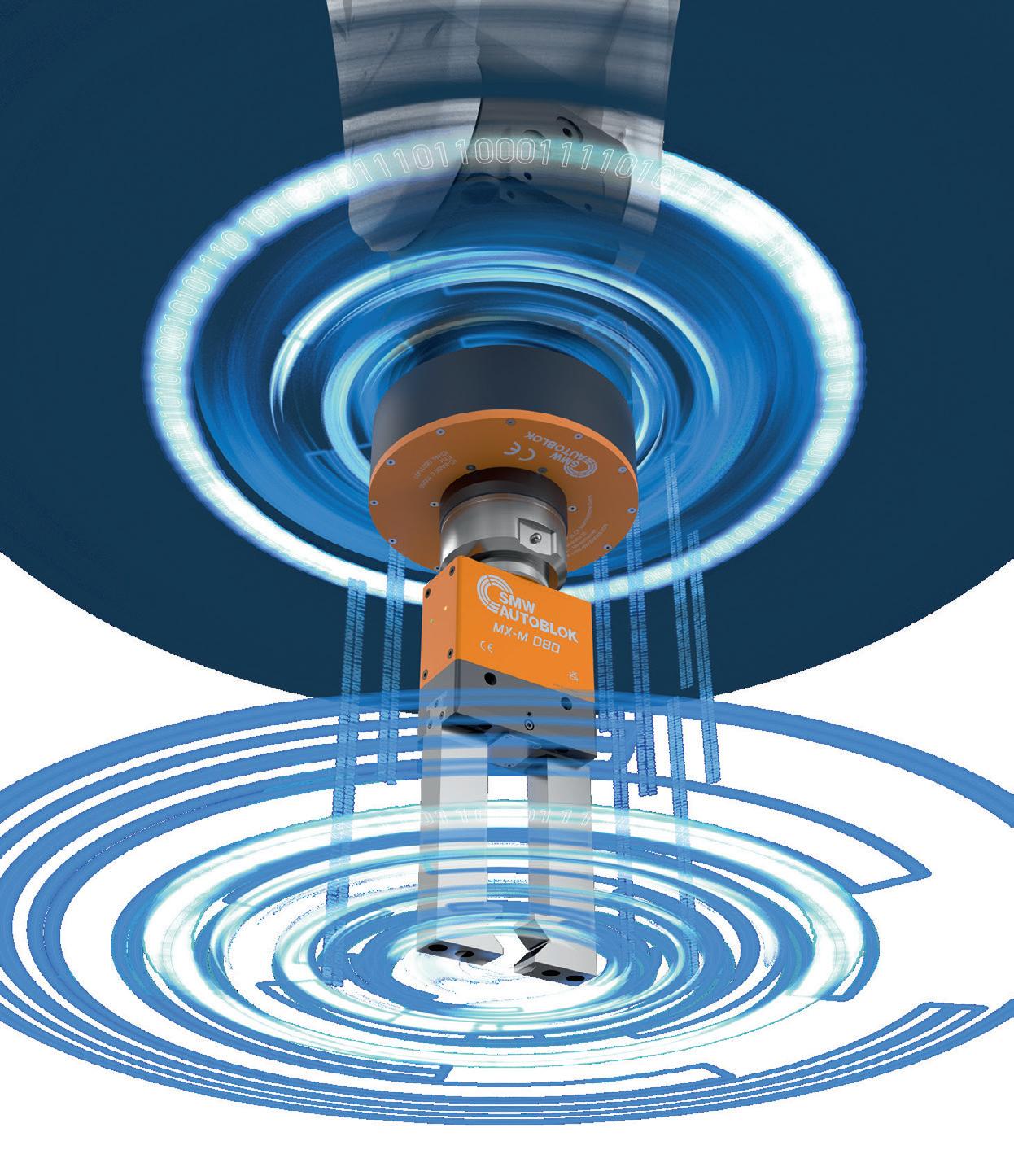
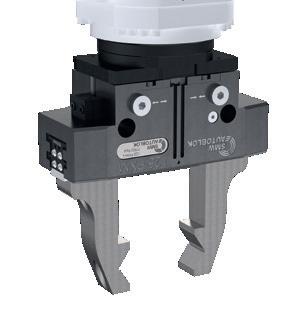
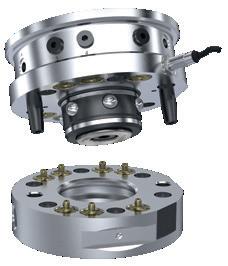

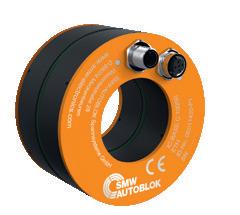
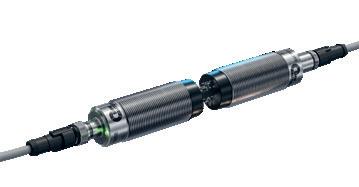
49 DESIGN WORLD March 2024 www.designworldonline.com
Solutions for Automation and Robotics Learn more today. 847-215-0591 smw-electronics.com
Pneumatic Grippers
Robotic Quick Change Systems
Inductive Coupling Systems
Mechatronic Grippers
|
|
|
|

THE INDUSTRY’S MOST COMPREHENSIVE AMR FLEET
Autonomously transport materials up to 4,200 lb with the industry’s most comprehensive autonomous mobile robots and fleet management software.
$1.5M
saved in the first year at an aerospace facility
6x
throughput increase at a CPG facility
11 month
customer payback period at an automotive facility

www.ottomotors.com
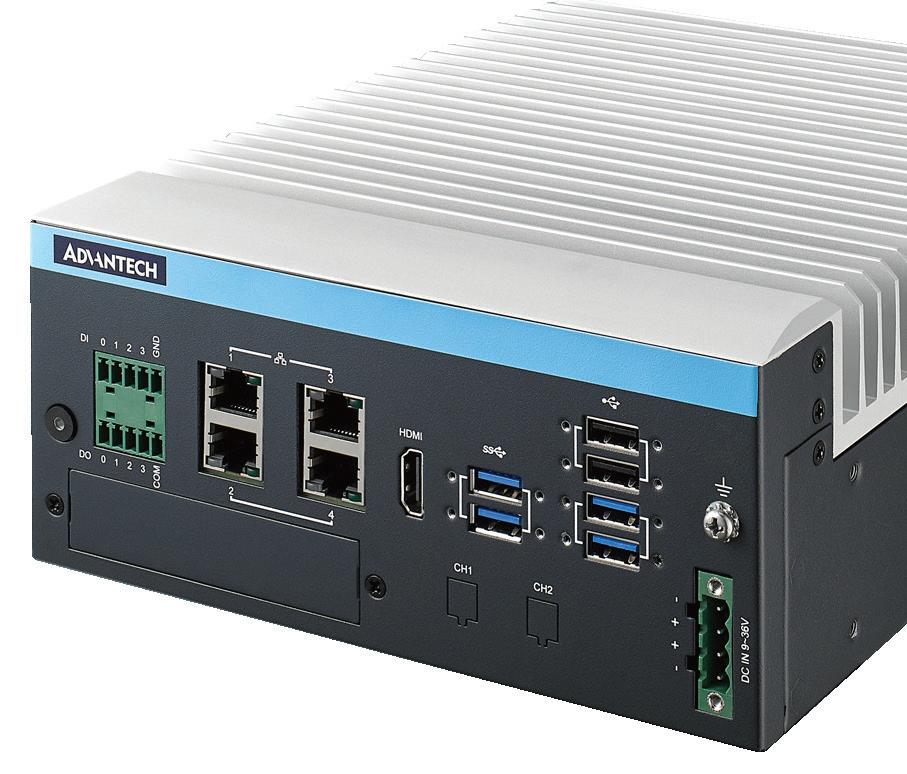
“Accelerating AI from developer to deployment is very important,” said Elvis Lee, industrial AI platform manager of Industrial Cloud and Video Group at Advantech. “GPU performance has increased 1,000 times compared to five years ago, and data has increased 10,000 billion times within the past 10 years. The data is moving very fast compared to previous technology.”
While moderating an afternoon panel, Lee mentioned that NVIDIA recently surveyed its customers to understand what sensors and sensor interfaces they use in AMR projects. LiDAR sensors and USB, MIPI, Ethernet, and IR cameras are among the most popular. Mixed-sensor integration is also popular, but driver and compatibility issues and long integration times can delay projects.
“GMSL does not define a consistent camera parameter data structure, so people spend a lot of project time ensuring compatibility between the GMSL capture card and a device,” said Liu during Lee’s panel. “Currently, we are working on defining a camera parameter profile and plan to integrate it into our unit by the second half of 2024. We believe this will help customers easily select a camera, shorten the overall project time, and make the configuration more flexible.”
Advantech isn’t alone in its integration efforts, and as Pao noted, it takes the entire value chain to see widespread industry impact. “The whole value chain is very long. If you start from the chip vendor, system manufacturer, systems integrator, and toward the end user, it’s a long journey,” he said.
For example, on day two of the conference, Pyong W. Pak, CEO of Movensys, spoke about his company’s all-in-one software controller platform for AGVs and AMRs and how it opens doors for engineers.
“One thing that we've heard from our customers is that vision engineers do not know about motion control, and motion control engineers do not know about vision. So, we’re working on an all-in-one solution that ties vision and motion control,” said Pak.
Pak also noted that according to Interact Analysis, though more than four million mobile robots will be installed worldwide by 2027, only 14% of warehouses will deploy at least one AMR by then. However, as vision technology evolves and more companies prioritize integration, adoption barriers may dissolve and make advanced automation a reality for more warehouses. AW
Advantech • advantech.com




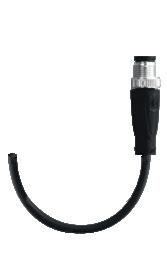

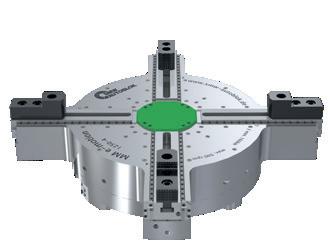
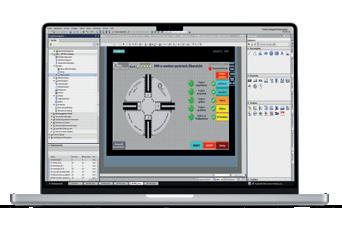
| Digitized Workholding Hybrid / Electric | Sensor Systems | Inductive Coupling Systems Energy + Signals | PLC Safety + Hardware Components Solutions for Automation and Robotics Learn more today. 847-215-0591 smw-electronics.com Our innovative automation systems will help you maximize productivity, reliability and profitability. – Process automation – Mechatronic drives – Reduced CO2 footprint – Reduced energy consumption 51 DESIGN WORLD March 2024 www.designworldonline.com
MOBILE
How supercharge warehouse operations
Autonomous and collaborative robots are quickly becoming essential warehouse tech. Here’s a look at their differences, the tasks they perform best, and a few important features.
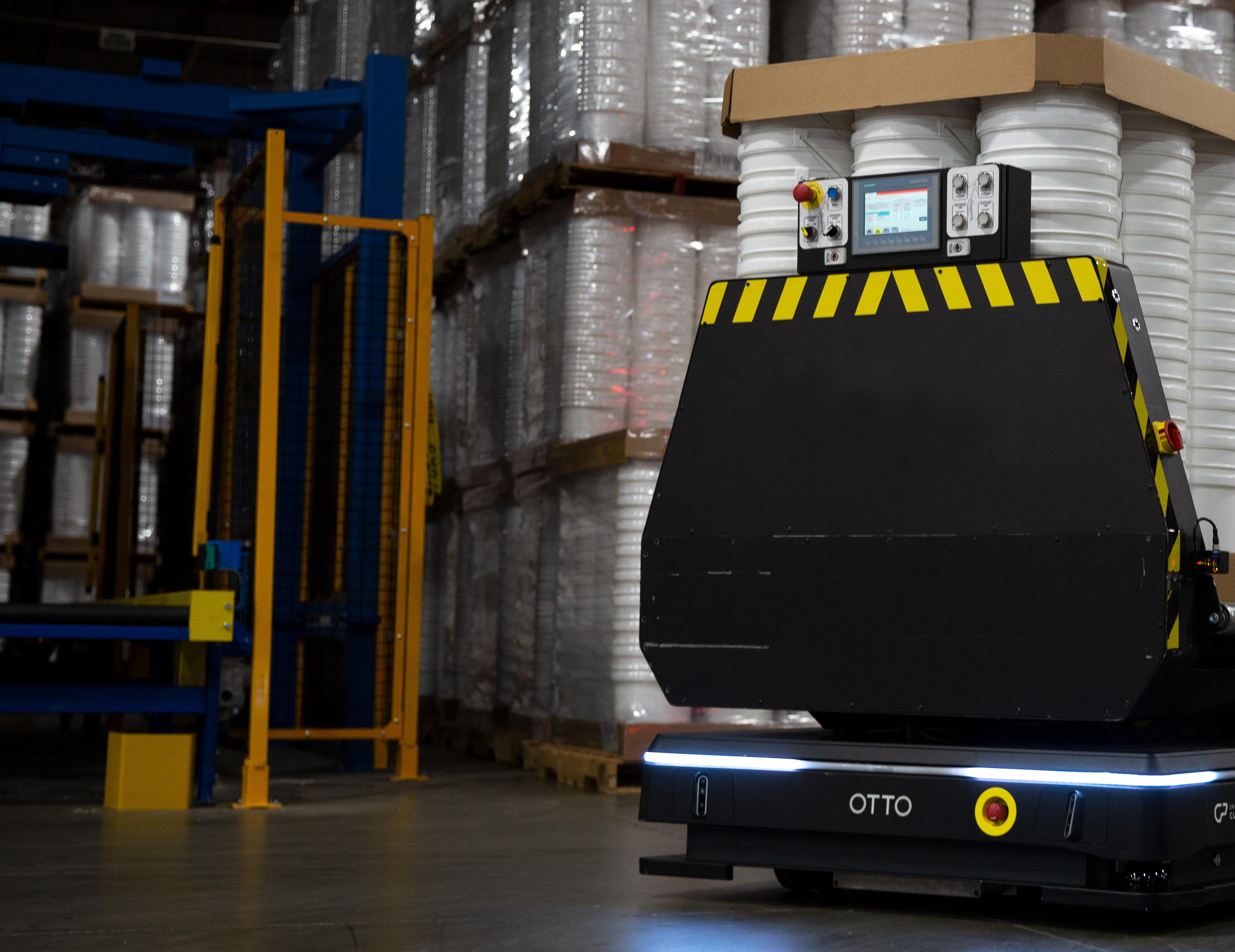

Robotics are a common sight in manufacturing and assembly. These stationary machines are great at handling repetitive or predetermined tasks but are almost useless in a dynamic logistics and materials handling environment. However, warehouse operators are increasingly looking to leverage the many advantages of robotics to transport items through the facility. That’s where an autonomous mobile robot (AMR) or collaborative mobile robot (CMR) is a great fit.
AMRs navigate their environment using semi- or full autonomy. These are basically mobile platforms — often traveling on wheels — outfitted with various features to perform specific tasks. Many AMRs use SLAM (Simultaneous Localization and Mapping) technology, which helps the robot locate
itself in its environment and adapt its behavior to dynamic situations.
AMRs also navigate using cameras, sensors, artificial intelligence, and machine vision. These technologies help avoid collisions with machinery or people and connect with other robots and digital systems to seamlessly integrate with the larger operation.
This ability to choose their own route through the environment sets them apart from their predecessors, autonomous guided vehicles (AGVs), which follow a predetermined path to complete automated tasks under a human operator’s supervision.
Why adopt AMRs?
AMRs can bring significant benefits to a busy warehouse, including: Worker safety. AMRs take on tasks
that could be dangerous or impossible for human workers to perform. These operations range from cleaning and disinfecting to transporting dangerous materials and heavy loads or working in extreme conditions that are uncomfortable or harmful for humans.
Flexibility. Shop floor operations don’t grind to a halt because a robot encounters a fallen box or a crowd of people. AMRs don’t need the direct supervision of an operator; they can assess and react to their environment in real time while completing their tasks.
Boosting productivity. AMRs tackle low-skill repetitive tasks, such as transporting materials across a production floor, cleaning, and package sorting. Employees can focus on highervalue tasks while the AMR navigates around the workspace.
www.designworldonline.com 52 DESIGN WORLD March 2024
AUTOMATED WAREHOUSE
EDITED BY:
MICHAEL OUELLETTE SENIOR EDITOR ENGINEERING.COM


Generating data. An AMR doesn’t work independently — it’s usually connected to a digital platform and constantly communicates with other robots and company assets. The sensors generate significant amounts of performance data that help create actionable insights about operational efficiency. AMRs also function as mobile data-gathering platforms that empower enterprises to improve business operations from process efficiency to preventative maintenance to workforce behavior.
Types of AMRs
AMRs add value in a variety of situations and come in a wide range of shapes, sizes, and abilities. Here are a few broad categories:
Picking robots. Picking AMRs identify, pick up, and handle items from fixed shelves. In conventional picking, human pickers physically move from one shelf to another, picking products and carrying them or placing them on conveyors or carts. A picking AMR can take on the work of picking and transporting items between workers and stations, enabling workers to take items without moving around.
Sorting robots. Sorting AMRs scan packages and determine where to deliver them within the warehouse. They autonomously plan and travel the optimal route, then deposit the packages themselves or wait for human operators to accept them.
Autonomous forklifts. These driverless forklifts transport heavy materials across a facility. There are generally two types: a pallet jack, which can transport material from one position on the floor to another, and a pallet stacker, which stacks materials.
Inventory robots. These robots automate inventory management, keep track of inventory levels, product location, and planogram compliance, and can confirm product pricing. Inventory tracking, movement, and reconciliation can be a time-consuming challenge, particularly for large-scale operations, such as fulfillment centers — and inventory AMRs can track inventory with a lower chance of error than a human counterpart.
Drones. Drones are becoming increasingly common for last-mile deliveries, autonomous inspection, and even disaster response. These airborne robots perform accurate and ongoing monitoring of facilities and the workforce. They can deploy high-resolution cameras and other sensors and use AI-powered software for analytics.
Autonomous tow tractors. These AMRs help automate the transportation of materials in dynamic

Non-contact transmission of both power and data offers
– Safe and fast data communication via Ethernet Signals (Profinet, Ethernet IP, etc.)
– High energy transmission (up to 400 Watts)
– Totally wear and maintenance free F180
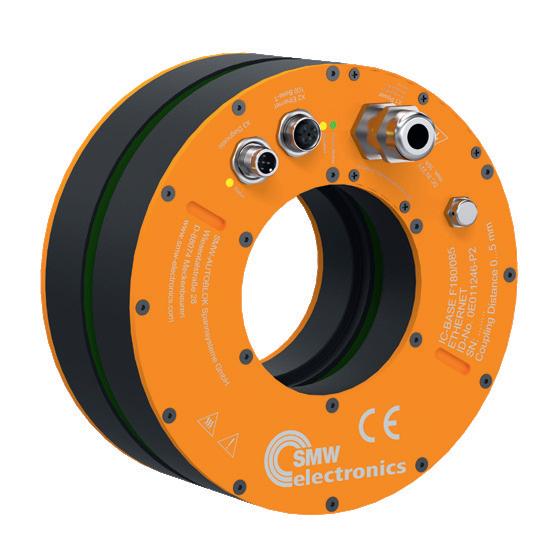
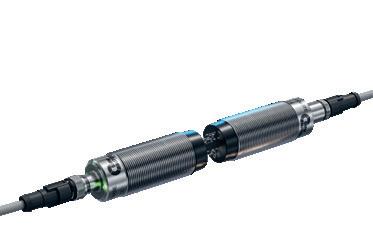
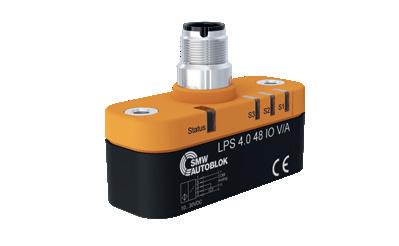


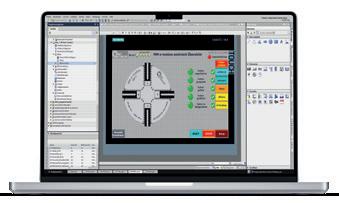
53 DESIGN WORLD March 2024 www.designworldonline.com
Inductive Coupling Systems (Energy + Signals)
Linear Positioning Systems
PLC Safety + Hardware Components | USP-Ultrasonic Positioning Measuring System
and
Learn more today. 847-215-0591 smw-electronics.com
|
|
|
Solutions for Automation
Robotics
Inductive Coupler
| OTTO Motors

Intelligent Pallet Systems
Built For Capacity, Speed, & Accuracy
and high-traffic environments. They reduce trips, particularly when towing many items in cart trains, can increase throughput productivity, and enhance worker safety by reacting to unexpected changes and avoiding collisions.
Automated guided carts. These robots are known for their small chassis and low profile, which enable them to fit under carts or shelves for transportation. These machines navigate small spaces with minimal or zero turn radius and must navigate around workers and other robots.
Cleaning robots. These robots perform tasks such as scrubbing, mopping, vacuuming, and disinfecting. Cleaning AMRs, such as automated scrubbers, are a relatively new entry in the market and are becoming increasingly popular as solutions to labor shortages. Heightened awareness of cleanliness and sanitizing brought on by the COVID-19 pandemic also contribute to their
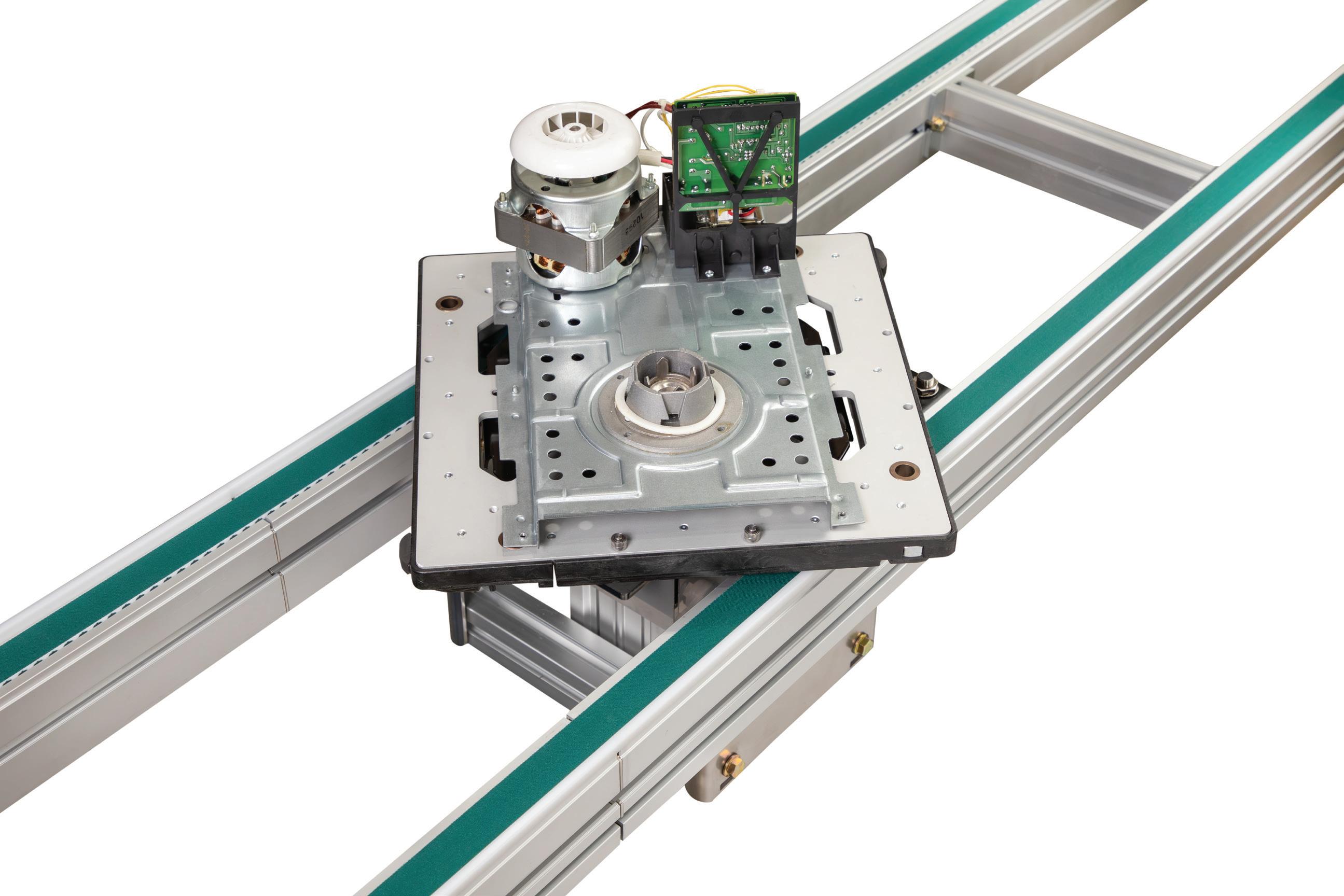
AMRs are being relied on more and more across a variety of sectors. With the ability to navigate and problem-solve autonomously, they unleash significant potential for increased efficiency, process optimization, data gathering and management, and worker safety. And with more operations connecting to the Internet of Things, robots that dynamically adapt to and enhance the work of human employees could be game changers for the shop floor and entire
Though AGVs and AMRs have become popular, they have limitations. When a task requires more than just moving products around a facility, CMRs are an option. They are equipped with sophisticated sensors and intuitive controls that read human body language, identify and respond to social cues, and anticipate what their human coworkers will do next. To accomplish this, CMRs use LiDAR sensors, 3D depth cameras,
CMRs have a few distinct advantages, www.dornerconveyors.com
AUTOMATED WAREHOUSE 54 DESIGN WORLD March 2024
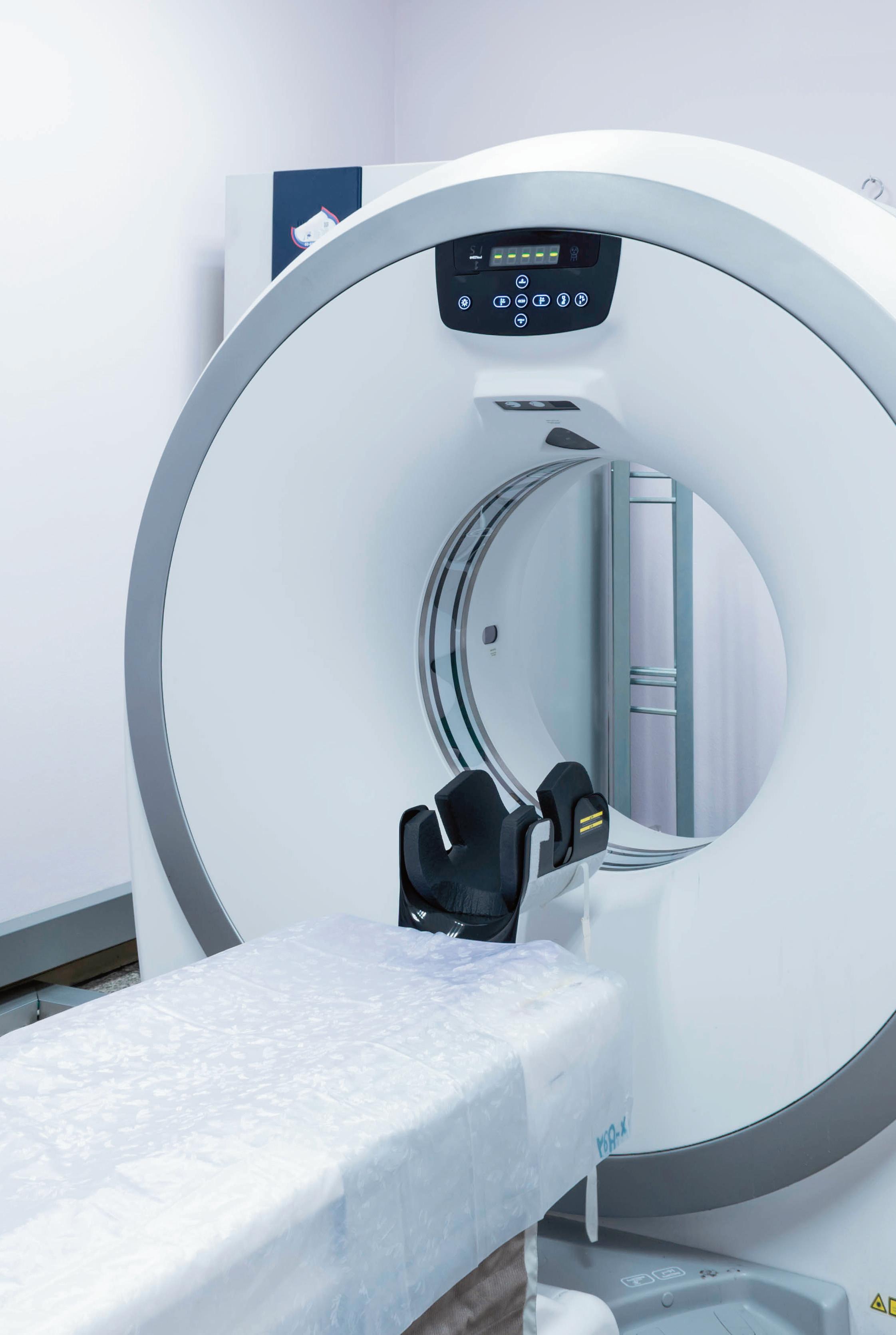
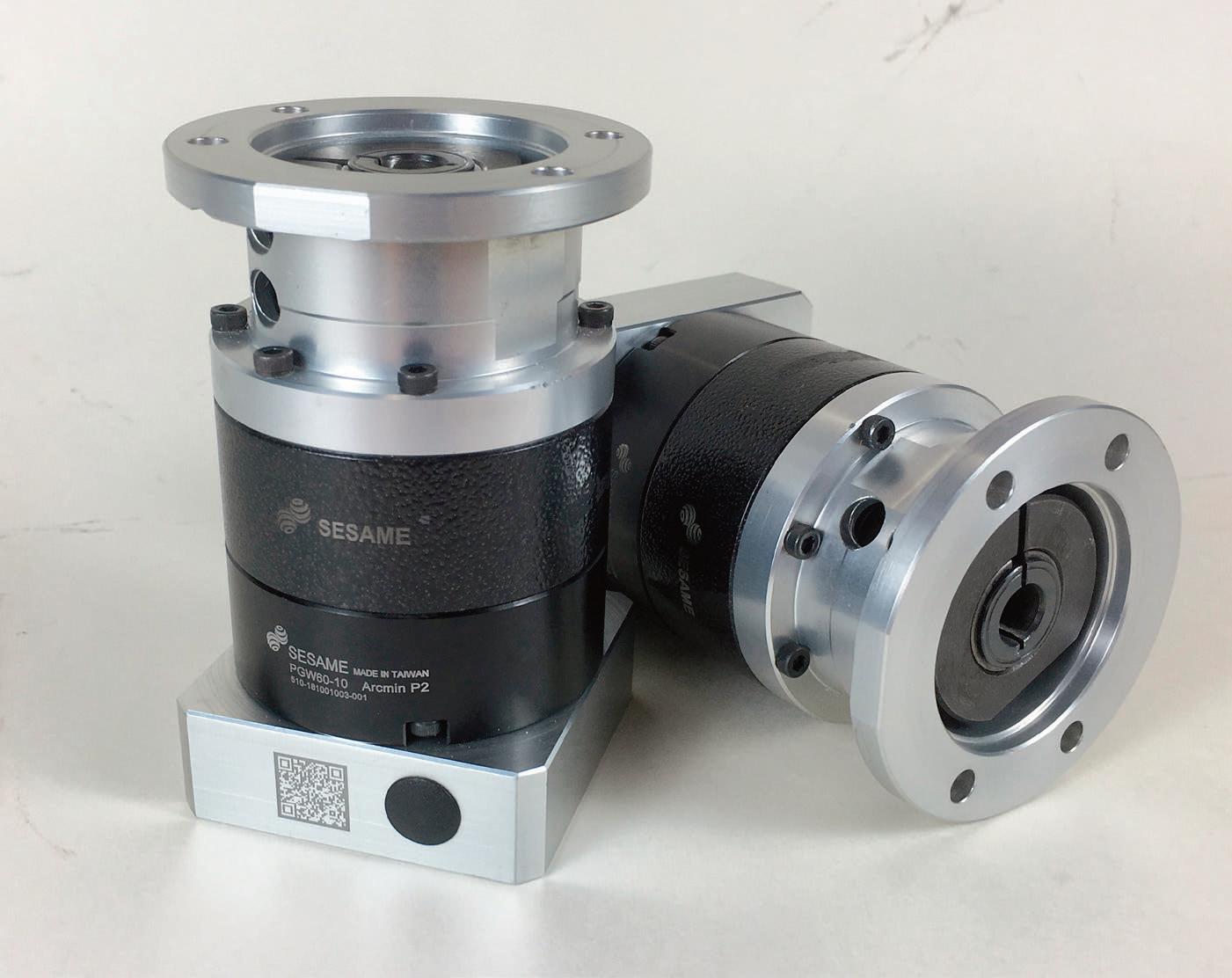

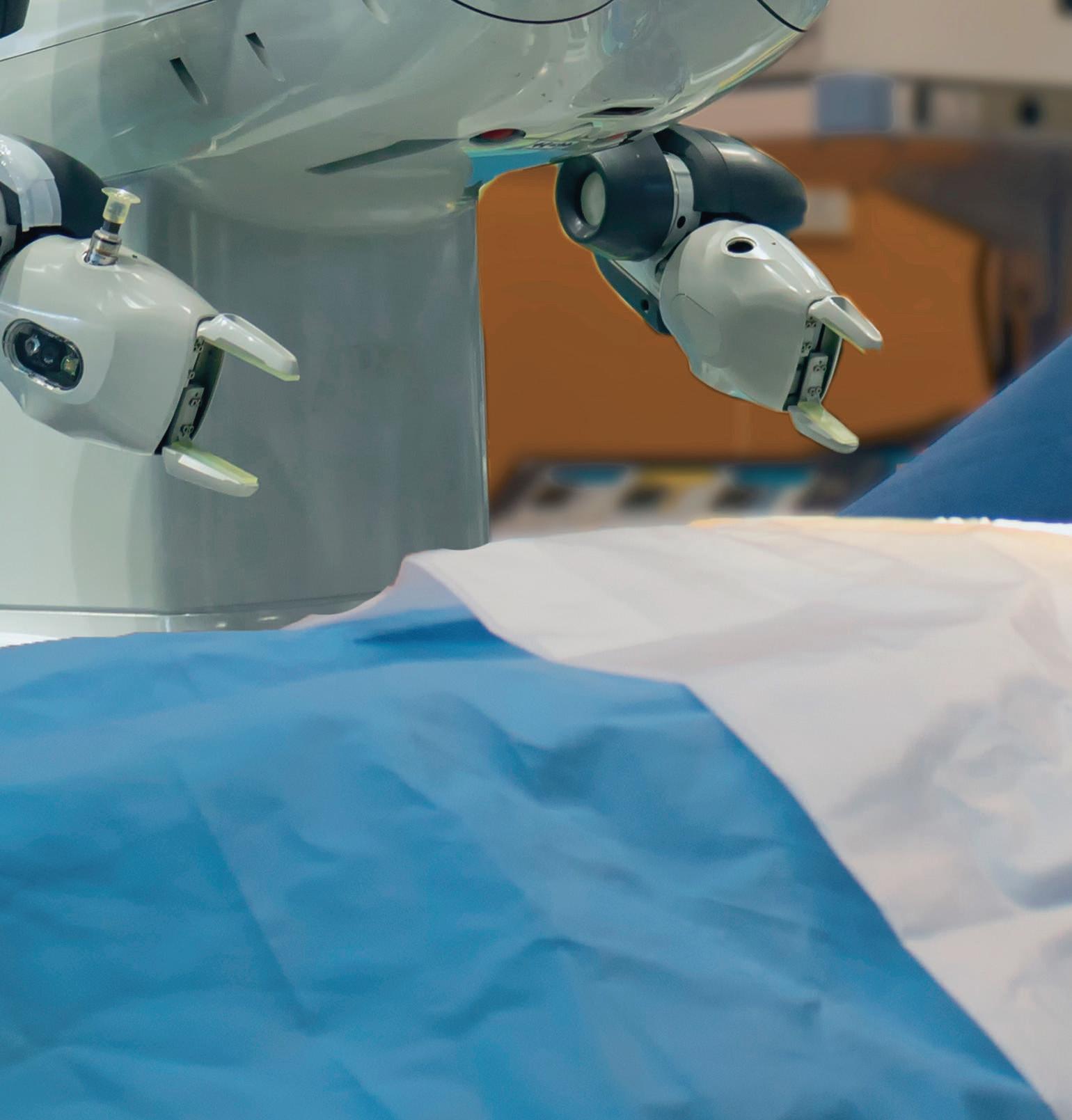
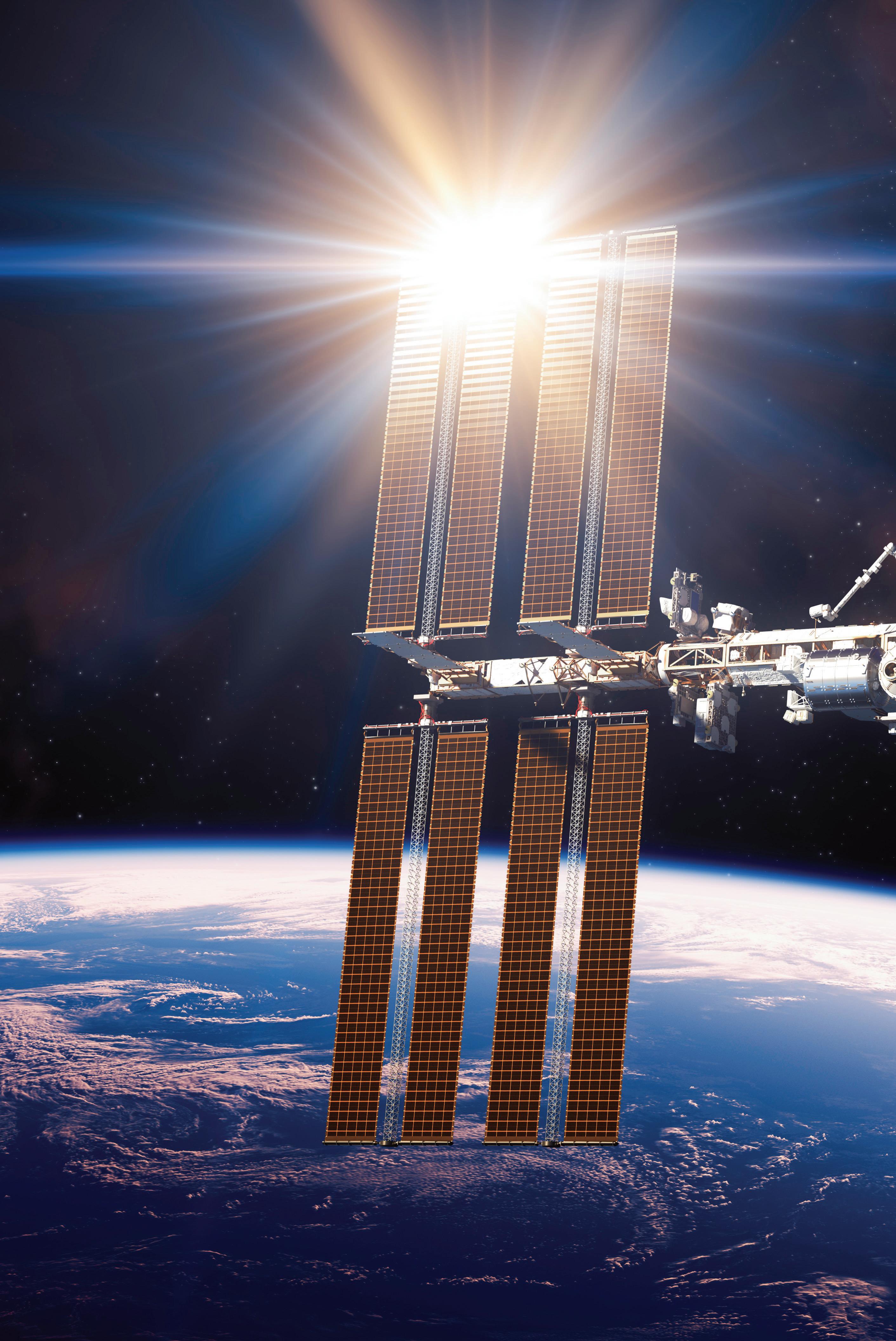

Motion Components to Automate any Industry 800-349-0245 diequa.com/dw Servo Gearheads for Linear Actuators











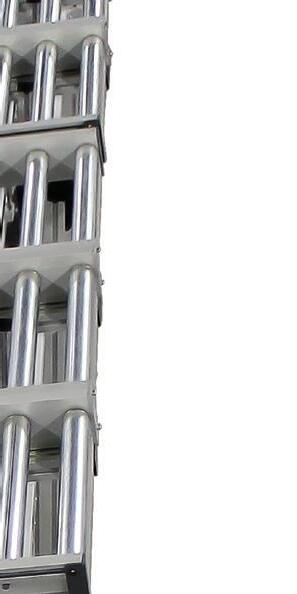

Intelligence. Thanks to deep learning and AI, CMRs generate and process information efficiently with little or no need for instructions from a human operator. These machines self-manage and make decisions on the fly. As a result, they execute repetitive or hazardous tasks and adapt to the humans around them in real time.

Connectivity. The increased processing power needed for intelligent automation also means CMRs use machine-to-machine communication to interact with humans through multiple integrated interfaces, such as touchscreens and sensors. In contrast, most AMRs don’t have this level of interactivity.
Flexibility. CMRs adjust the way they work based on changes in their environment, adapting to different layouts or paths through a warehouse.

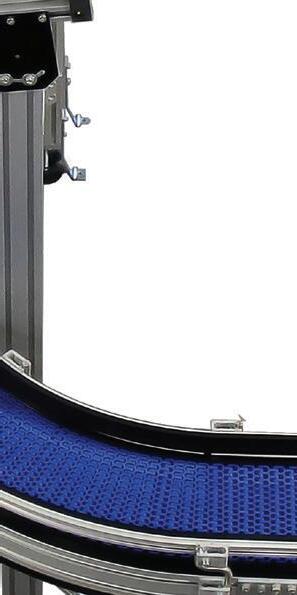





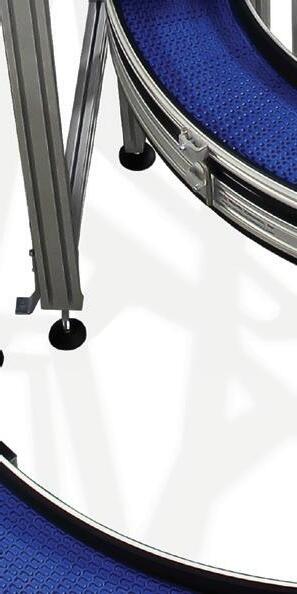


Improved safety. Intelligent CMRs that can handle and process massive datasets in real time can better predict human actions and perform high-precision movements in response to humans — making these robots safer for people to work alongside. These machines have highly responsive and reliable failsafe mechanisms. AW





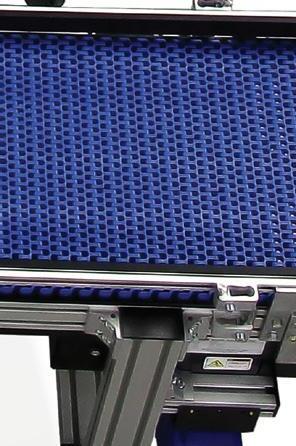
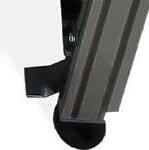
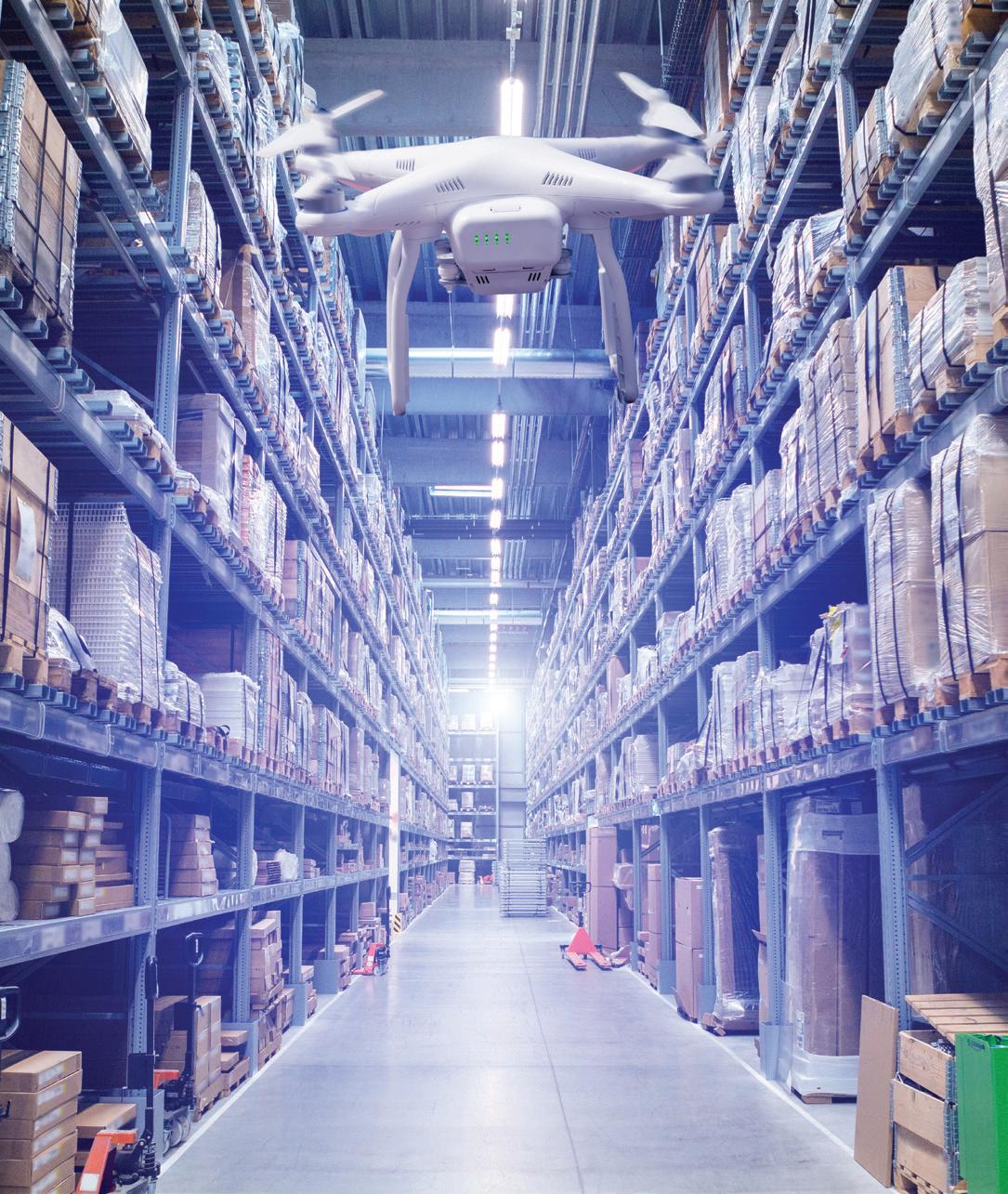
AUTOMATED WAREHOUSE 56 DESIGN WORLD March 2024
better
Conveyor Solutions for Warehouses www.mknorthamerica.com better products.
solutions.
How Cognex Is Accelerating Warehouse Automation
Article by Ben Carey • Director, Logistics Vision Products • Cognex Corporation
To move fast this year, logistics companies will be looking for solutions that automate processes and increase throughput while decreasing costs. End users and OEMs need technologies that don’t require custom design and installation, but rather are standardized, easy to install, operate, and maintain; and solve multiple applications, in place of discrete devices that only satisfy a single need. Also, it will be table stakes for leading companies to expect solutions to include advanced data and analytics capabilities to enable better decision-making and troubleshooting.
While the ultimate goal of logistics companies is to have “dark warehouses” that require few workers and rely on automation and robotics, the reality is that many companies are simply trying to increase the amount of
automation at their warehouses to gain an incremental competitive edge. This is why technology providers have shifted their focus toward the development of standard, easy-to-use vision solutions for logistics, enabled in large part by advanced technologies — such as AI (Artificial Intelligence).
Partnering on Standardized Solutions from Inbound to Outbound
At Cognex Corporation, we’ve committed to creating standard solutions that help facilities advance operations with automation. Most recently, we’ve released our new Modular Vision Tunnels. These flexible scan tunnels offer one-to-six-sided barcode scanning for a range of speeds and box gaps. These solutions are quick and easy to install for reduced
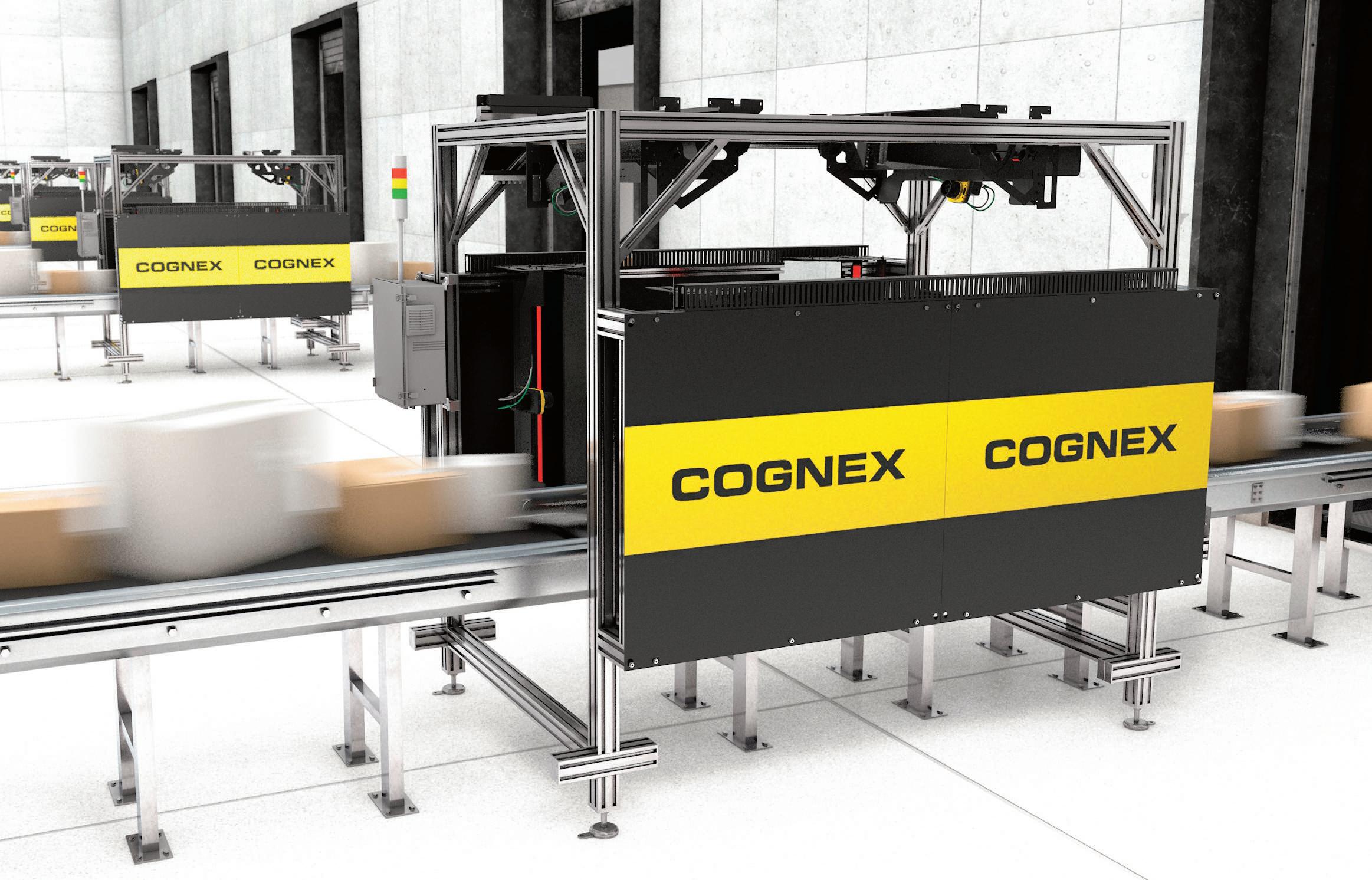
downtime and risk, and address multiple challenging applications, such as inbound receiving, outbound truck loading, and ship sorting.
These solutions are modular, yet compact; customers can set up tunnels with different configurations, add on vision tools such as dimensioning, and choose between DataMan 380 or DataMan 580 image-based barcode readers, which offer multi-symbology decoding, the ability to read multiple codes, and 99.9% read rates. Edge Intelligence data analytics software is built within these tunnels, allowing customers to easily set up and maintain them with real-time insights into performance and maintenance.
Since both end users and OEMs want to increase throughput while ensuring traceability and keeping costs down, it’s important to choose solutions that are standard, yet flexible. Solutions that require custom installation and starting from the ground up each time can be costly and riddled with risk. Logistics companies that want to get ahead need to future-proof their technology investments to ensure that they’re able to scale as their business grows.
For more information, visit www.cognex.com/RobotReportNov and view our Logistics Solutions Guide.
ADVERTORIAL 57 DESIGN WORLD March 2024 www.designworldonline.com
Automated Guided Vehicles (AGVs) and Autonomous Mobile Robots (AMRs) are revolutionizing the way materials and goods are moved within various industries. These innovative robotic systems are designed to optimize efficiency, enhance safety, and streamline logistical operations.
AGVs are wheeled robotic vehicles that are guided along defined pathways within a facility, such as magnetic strips or tracks. They are equipped with sensors and software that enable them to navigate autonomously while carrying out tasks such as transporting materials, components, or finished products. AGVs are adept at performing repetitive and standardized tasks, making them ideal for applications in manufacturing, warehousing, and distribution centers. Their precision and reliability contribute to improved productivity and cost savings for businesses.
On the other hand, Autonomous Mobile Robots (AMRs) are an evolution of AGVs, leveraging advanced technologies such as LiDAR, cameras, and sophisticated algorithms to navigate and operate in dynamic environments without the need for physical guides or markers. AMRs have the flexibility to adapt to changing surroundings, avoiding obstacles, and adjusting their routes in real time. They excel in scenarios where the operational environment is subject to frequent changes, allowing
for seamless integration into workflows alongside human workers. AMRs are increasingly utilized in e-commerce fulfillment centers, hospitals, and other settings where agility and adaptability are paramount.
Both AGVs and AMRs offer substantial benefits to businesses, including increased operational efficiency, reduced labor costs, enhanced workplace safety, and the ability to operate 24/7. Furthermore, these robotic systems contribute to the optimization of supply chain management by facilitating just-in-time delivery, inventory tracking, and order fulfillment. The integration of AGVs and AMRs into existing infrastructure represents a strategic investment for organizations seeking to modernize their operations and gain a competitive edge in a rapidly evolving market landscape.
In conclusion, the proliferation of Automated Guided Vehicles and Autonomous Mobile Robots signifies a paradigm shift in industrial automation, empowering businesses to achieve higher levels of productivity and operational resilience. As these technologies continue to advance, their potential to revolutionize the future of logistics and manufacturing is undeniable. Please contact DieQua to discuss your automated warehouse applications, or to ask us any questions you may have.

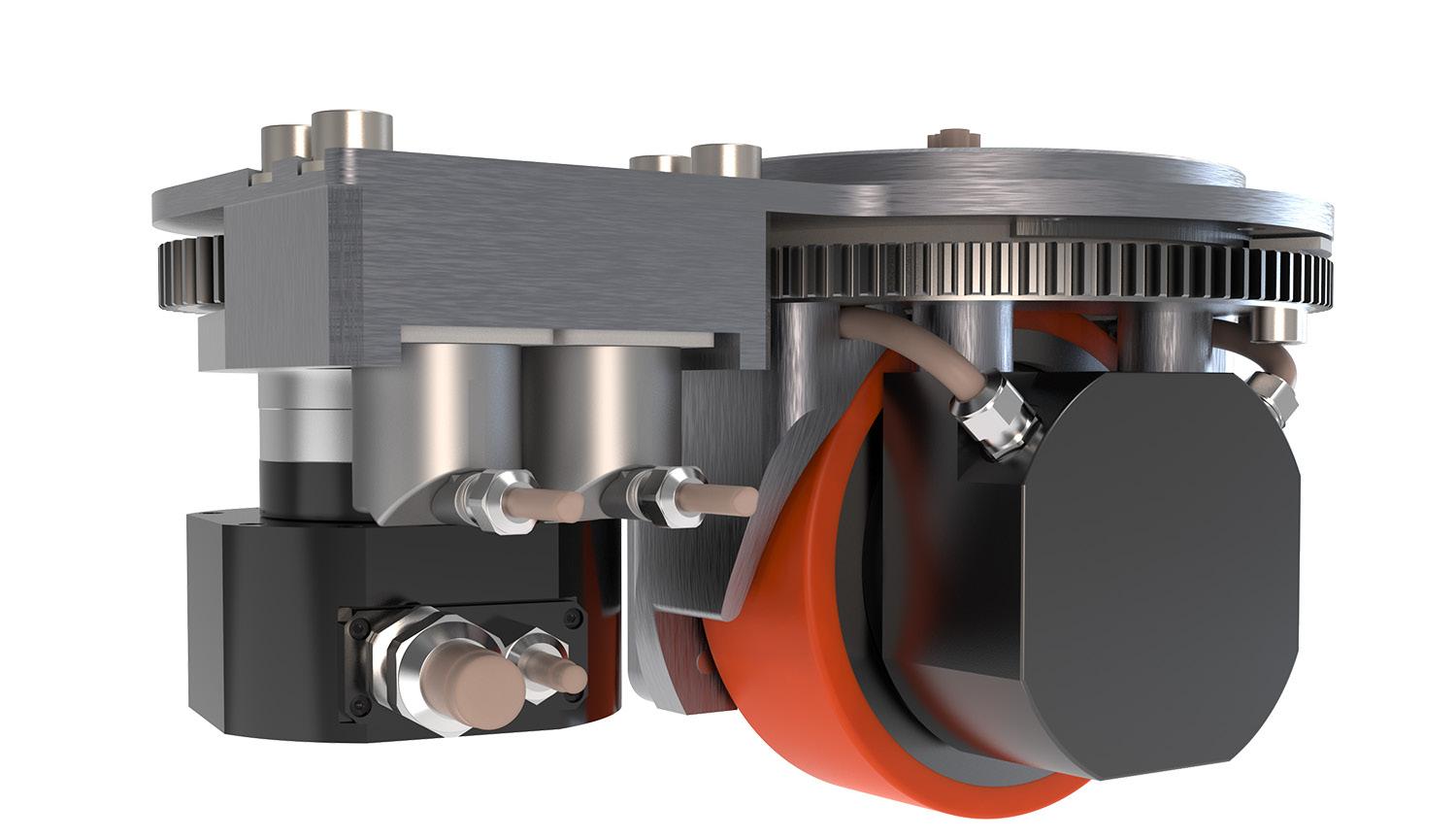
ADVERTORIAL www.designworldonline.com 58 DESIGN WORLD March 2024
SCAN THE QR CODE FOR MORE INFO
Unleashing Efficiency: The Dynamic Duo of Conveyors and Robotics in Modern Warehousing
In the dynamic landscape of modern warehousing, the integration of conveyors and robotics has emerged as a game-changer, revolutionizing how facilities meet goals of throughput and accuracy. This combination enhances operational efficiency and catapults warehouses into a new era of productivity.
Elevating Throughput with Robotic
Precision:
Robotics, equipped with advanced vision systems and machine learning, are transforming the movement of goods within warehouses. Automated guided vehicles (AGVs) and robotic arms seamlessly collaborate, ensuring a continuous flow of items from receiving to shipping. Conveyors act as the arteries, efficiently transporting products between robotic workstations and amplifying throughput rates. Dorner conveyors specifically act as the Autonomous mobile robots (AMRs) and robotic arms have redefined order picking. Conveyors play a pivotal role in integrating these robotic picking systems, allowing for a smooth transition of items from storage to packing stations. This dynamic interaction ensures that orders are fulfilled rapidly, meeting the demands of today’s fast-paced supply chains.
Dorner’s 2700 Medium Duty series conveyors are designed for AGV/ AMR compatibility, allowing for quick and easy integration of the technology
into existing conveyor systems. With a robust design, increased weight rating, extended widths, and a low-profile aluminum frame, the 2700 series is ideal for applications that require both speed and precision.
Precision at Scale: Conveyors and Robotics Driving Accuracy:
Automated Quality Control: Robotics with computer vision capabilities ensure unparalleled quality control process accuracy. Conveyors serve as a conduit for products to undergo automated inspections by robotic systems, guaranteeing that only defectfree items proceed through the supply chain. This not only reduces errors but also maintains high product quality.
Error-Free Order Fulfillment: Integrated with robotic order fulfillment systems, Conveyors contribute to flawless picking and packing processes. Robots navigate the warehouse, guided by conveyors, ensuring the correct items are selected and efficiently transported to packing stations. This collaborative approach significantly reduces order errors and enhances overall accuracy.
Real-time Inventory Accuracy: In conjunction with conveyors, robots are transforming inventory management. Drones and robotic platforms equipped with RFID technology conduct real-
time inventory checks. Conveyors efficiently transport these robotic platforms, enabling swift and accurate updates to inventory levels. This synergy ensures that warehouses maintain optimal stock levels, reducing the risk of stockouts or excess inventory.
Looking Forward: The Future of Warehousing
Efficiency:
As modern warehousing continues to evolve, the integration of conveyors and robotics is a testament to technological innovation. This dynamic duo not only meets the demands of today’s throughput and accuracy goals but also positions warehouses for a future of continuous improvement and adaptability. By embracing this integrated approach, warehouses are not merely keeping pace with the times but defining the future of efficient, accurate, and responsive supply chain management.
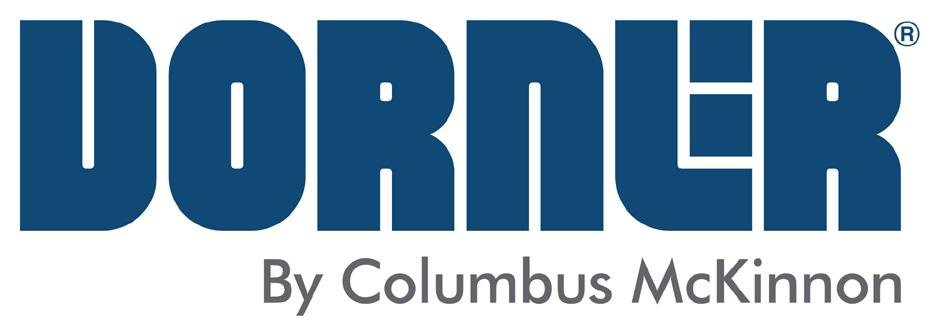
ADVERTORIAL 59 DESIGN WORLD March 2024 www.designworldonline.com
DORNERCONVEYORS.COM
Extend Service Life and Reduce Downtime with Enidine’s HD/HDN Series Shock Absorbers
Enidine’s HD/HDN Series shock absorbers are the compact, reliable solution you have been looking for to extend the service life of your warehouse’s automated storage and retrieval systems and overhead bridge and trolley cranes.
The highly engineered product line features zinc-plated and painted external components or optional epoxy painting, and an internal charged air/ oil accumulator or optional bladder accumulator for higher cycle rates.
Better yet, Enidine’s HD/HDN series solutions provide advanced corrosion resistance, making them ideal for use in harsh environments. Available with bellows, clevis mounts and safety cables. The shock absorbers’ orifices are also fully customizable to meet the specified damping requirements of your warehouse applications.
Customers can also opt for fluids and seal packages to expand the standard operating temperature range from (15º F to 140º F) to (-30º F to 210º F).
While they may have a shorter overall length and reduced weight than other industrial shock absorbers on the market, don’t let the compact size of these advanced solutions fool you. The HD/HDN line of shock absorbers meets the deceleration requirements of loads up to 8 million in-lbs. per cycle, keeping your equipment safe from wear and tear
and your operators safe from the risk of equipment malfunctions. And those protections extend to the environment as well.
All HD/HDN series shock absorbers are made with eco-friendly materials and offer the opportunity to add piston rod extension sensors for re-use safety requirements. The solutions are also certified by global governing bodies including the Occupational Safety and Health Administration (OSHA), the European Federation of Materials Handling and Packaging Manufacturers (FEM), and more.
The team at Enidine understands the importance of reducing downtime at your plant, so all product sizes in its HD/HDN line of heavy-duty hydraulic shock absorbers were engineered to be fully field-repairable. HD/ HDN series solutions are also manufactured and serviced in global locations, making it easier for you to get the support you need when you need it most. That means there will be little to no disruptions to production when maintenance is required – helping to keep your plant running efficiently and on schedule.
To learn more about Enidine’s HD/ HDN series solutions, visit www.enidine.com.
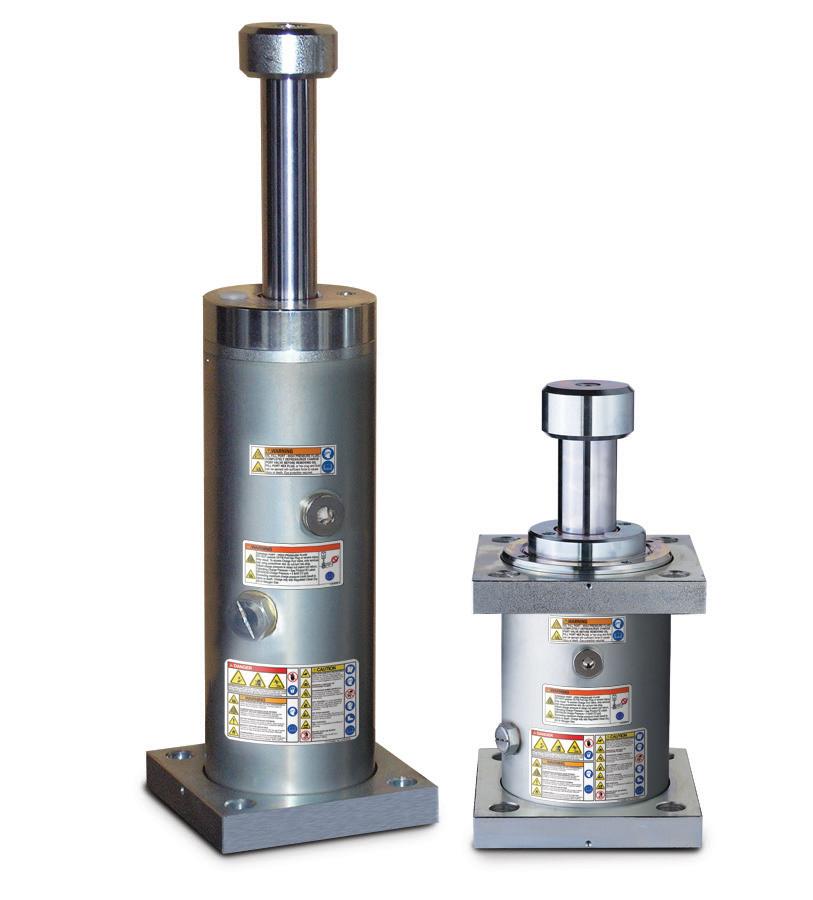
ADVERTORIAL www.designworldonline.com 60 DESIGN WORLD March 2024
The Data Driven Warehouse
How real-time data collected at every touch point smooths out operations
Emerging technologies are revolutionizing supply planning, enhancing supply chain efficiency, agility, and resiliency. Real-time data and advanced analytics driven by connected assets and systems help identify potential disruptions, mitigate risks and make informed decisions. We will discuss key insights into today's supply chain challenges.
What are today’s supply chain challenges?
The constantly evolving global supply chain landscape poses a range of challenges for businesses today that can impact their operational efficiency and effectiveness. Here are the biggest challenges:
• Business disruptions and market volatility: Over the past five years, supply chain operations in various industries faced unexpected events, which resulted in reactive responses. This can impede the ability to meet demand, leading to lost revenue, increased costs, and a decline in overall profit margins.
• Demand predictability: Social media, COVID driven direct-to-consumer (DTC) models, market volatility, and now inflation have made traditional demand forecasting insufficient. Operations are leaning on outdated forecast approaches that also lag and fail to respond adequately to current market dynamics.
• Holistic inventory visibility and optimization: Inventory management is complex and dynamic. The end of 2022-2023 saw excess inventory across many organizations due to COVIDrelated supply chain constraints. This led to higher costs, lower margins, and waste. The long term impact will lead to lost sales, and loss of differentiation, loyalty, and market positioning. Adopting an integrated approach and leveraging advanced technology and best practices, businesses can overcome these challenges - improving supply chain efficiency and resilience.
What is lacking in today’s supply chain strategies?
Supply planning today involves technology, data analysis and stakeholder collaboration. While technical and data analytic advancements have been made, there are still several areas that need improvements in the industry:
• Accurate transparency of data
• Dynamic supply planning and execution based on integrated intelligence and automated decision-making
• Convergence of network modeling, scenario and traditional planning and planning
Businesses want to improve supply chain visibility, predict, and mitigate risks, and optimize performance. Incorporating advanced concepts can enhance agility and resilience, meet customers’ evolving needs, and optimize performance. Below are a few advanced technologies and characteristics that must be included in an organization’s growth plans for supply chain optimization.
• Artificial intelligence and machine learning: Artificial Intelligence (AI) and Machine Learning (ML) can help businesses analyze data, find patterns, and make proactive decisions to mitigate risk. Many planning solutions have already integrated AI/ML into their core plans, but further integration of this can enhance algorithms. This could include detecting shifts and anomalies -- optimizing execution, automating operations such as key planning processes and real time decisions, and more.
• Digital twins and advanced simulation: Digital twins and simulation create virtual versions of physical assets, processes, and systems. These outputs can be used to evaluate scenarios and risk, identify key constraints, optimize, and evaluate alternative configurations.
With data and AI/ML, digital twins can continuously evaluate supply chains and networks, informing businesses in an unprecedented way.
• Automation and autonomous systems: The targeted deployment of automated storage retrieval systems (ASRS), autonomous mobile robots (AMR) and other assets with IoT connectivity, RFID asset tracking and machine vision can mitigate risks ranging from labor shortages to inventory loss. Working in tandem with digital twin and AI/ML, these assets comprise self-optimizing systems that drive higher output and efficiency by learning from both physical and simulated scenarios in the connected warehouse.
The future of supply chain planning requires digitization, automation, connectivity, and data-driven decision-making. Organizations that embrace these technologies create agile, transparent and efficient supply chains that are resilient to market changes and disruptions.


KALYPSO.COM

You can read more in our recent whitepaper, Synchronizing Supply & Demand in 2023 and Beyond.
ADVERTORIAL 61 DESIGN WORLD March 2024 www.designworldonline.com

















































































































